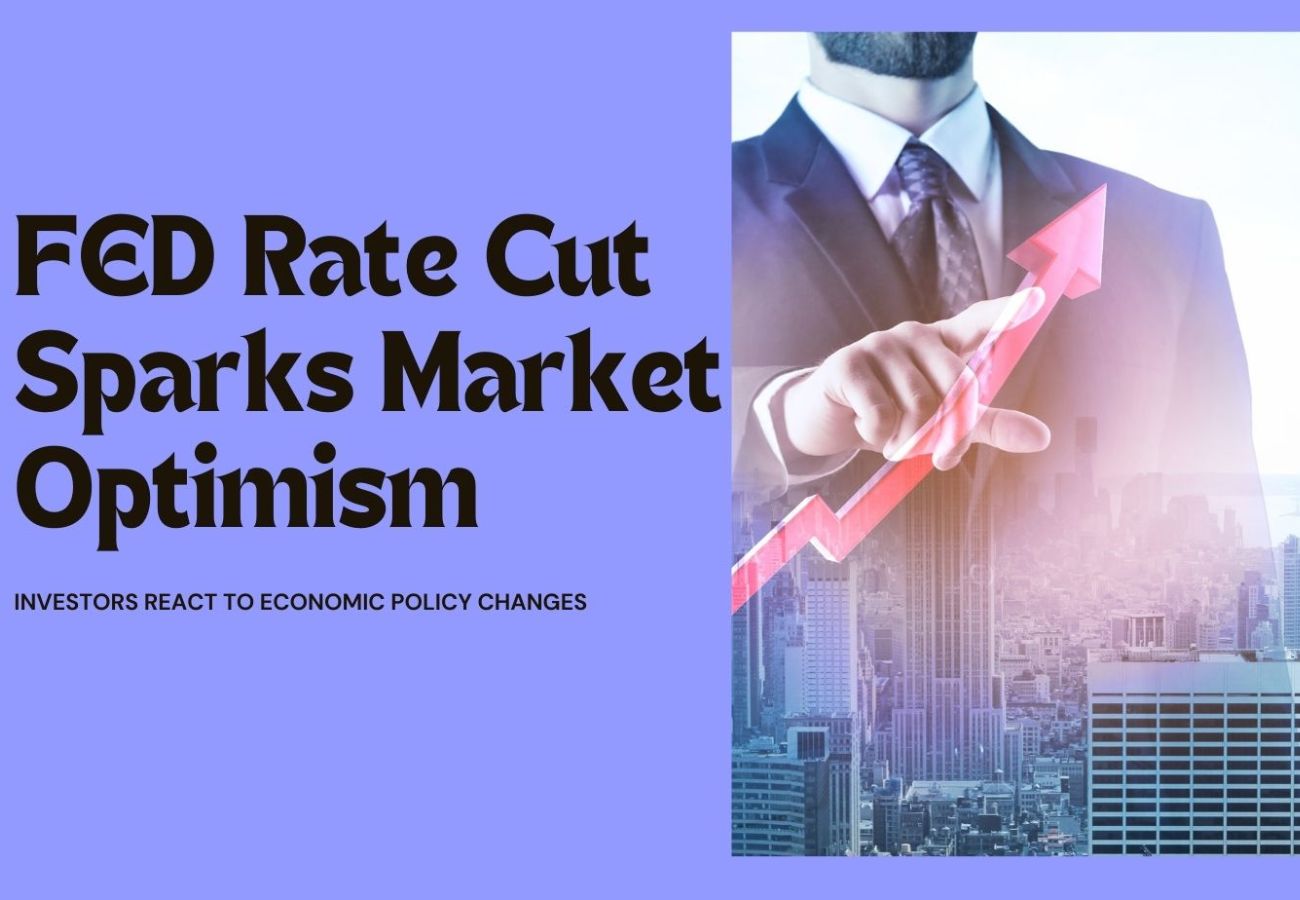FED Policy Rate Cut Gamble: Why the Markets Are Thriving
Introduction: The global financial markets recently experienced a significant surge following the announcement of a 50-basis-point rate cut by Federal Reserve Chairman Jerome Powell. This decision, which was widely anticipated by traders and market participants, has sparked considerable debate regarding its impact on the economy. In this article, we’ll break down the implications of the Federal Reserve’s (FED) policy change, discuss the reasoning behind it, and explore the potential effects on both global and domestic markets.
The FED’s Recent Policy Decision: A 50-Basis-Point Rate Cut |
|
| On the heels of mounting economic uncertainty, the Federal Reserve announced a bold move, cutting interest rates by 50 basis points. This significant rate cut was larger than the more typical 25 basis-point reduction. While some in the market expected the more conservative cut, Powell’s reasoning for the larger reduction was to control inflation and boost economic growth, primarily focusing on employment and job creation.
Historically, a 25-basis-point cut is seen as a signal that the economy is relatively stable, requiring only minor adjustments to keep inflation and growth balanced. A 50-basis-point cut, on the other hand, is a more aggressive stance, signaling that the FED is looking to address more serious concerns or preempt potential economic slowdowns. Powell assured markets that inflation was under control, stating that the FED’s target inflation rate of 2% could potentially be exceeded in the future, which helped calm fears of an impending recession. |
|
Market Reactions: A Surge Driven by Optimism |
|
| The rate cut led to a stormy surge in markets across the globe. In the U.S., major indices such as the Dow Jones, S&P 500, and Russell 2000 saw gains exceeding 1%, reflecting renewed investor confidence. Asian markets followed suit, with Japan, Shanghai, and Hong Kong seeing positive movements of 2%. European markets, including the CAC and FTSE, also climbed, further emphasizing the global optimism fueled by the FED’s decision.
The question arises: why did a larger-than-expected rate cut lead to such a positive reaction? Traders had positioned themselves in anticipation of the 50-basis-point cut, and once it was announced, they saw profits materialize, resulting in significant buying activity. Additionally, Powell’s clear communication regarding inflation control and job growth reassured investors that the U.S. economy was still on solid ground, even if the rate cut was larger than anticipated |
|
Why a 50-Basis-Point Cut? Understanding the FED’s Rationale |
|
| Powell’s decision to cut rates by 50 basis points was not made lightly. He emphasized that inflation was under control and that the primary focus of the FED was on job creation and economic growth. The aggressive rate cut was intended to further stimulate the economy, ensuring that job growth continues at a healthy pace and that businesses have access to lower borrowing costs.
However, there was some initial concern among market participants that a 50-basis-point cut could indicate deeper economic problems. Typically, such a significant cut might signal that the economy is slowing down and requires a larger push to regain momentum. Some argued that the FED should have made a 25-basis-point cut in a previous policy decision to avoid appearing reactionary. Despite these concerns, Powell’s comments helped to assuage fears, and the market ultimately viewed the decision positively. |
|
Potential Risks and Future Considerations |
|
| While the market reacted positively to the 50-basis-point cut, there are still potential risks to consider. Traders and investors should keep a close eye on several key economic indicators in the coming months, including: | |
U.S. Employment Data |
Job creation and hiring figures will be crucial in determining whether the FED’s policy shift is having the desired effect on the economy. |
Jobless Claims |
The number of jobless claims will provide insight into the stability of the labor market. |
GDP Growth |
Gross Domestic Product (GDP) data will offer a broader picture of economic health and whether the rate cut is stimulating growth. |
Inflation Figures |
Continued monitoring of inflation will be necessary to ensure that it remains under control as the economy grows. |
| If these data points show positive trends, it will confirm that Powell’s aggressive rate cut was the right move. However, if the data disappoints, it could suggest that the economy is not as strong as the market currently believes. | |
Conclusion
The recent FED policy, marked by a 50-basis-point rate cut, has sparked a wave of optimism across global markets. While some initial concerns lingered, Federal Reserve Chairman Jerome Powell’s commentary on inflation control, job growth, and economic stability has helped reassure investors. Moving forward, close attention will need to be paid to key economic indicators, but for now, the market appears to be in a positive position.
For traders and investors, this policy presents both opportunities and risks, making it essential to stay informed and ready to adapt as new data emerges. In the end, the FED’s actions have demonstrated a clear focus on supporting growth and maintaining stability in an ever-changing global economy.
Top Telegram-Based Crypto Projects Debuting on Binance in September 2024: What to Expect |


1 thought on “FED Policy Rate Cut Gamble: Why the Markets Are Thriving”